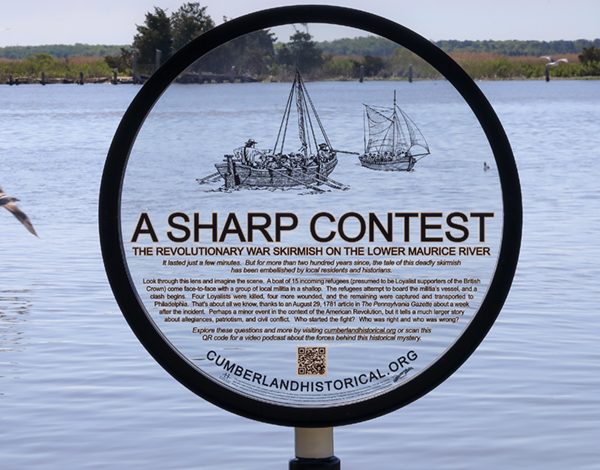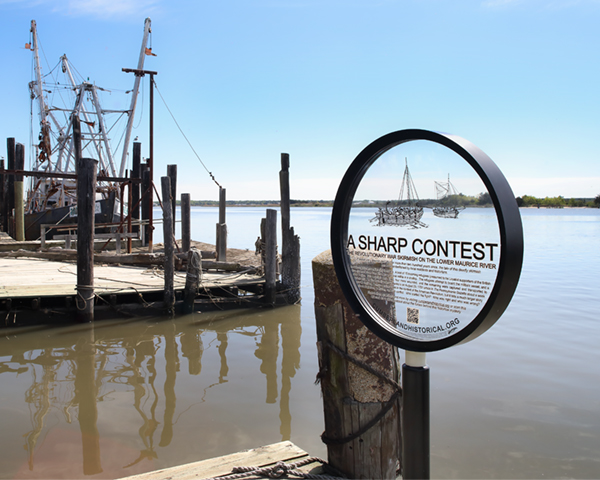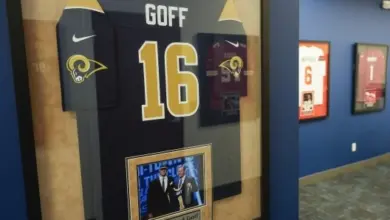Featured Project: Signage Designed to Raise Questions
The sign is designed to resemble a magnifying glass or a lens, and is designed to get the viewer thinking.
This featured project comes to us from Philadelphia’s VSBA Architects & Planners, which was commissioned to create the signage for the Bayshore Center at Bivalve, an historic fishing village on the bank of the Maurice River in southern New Jersey. The Bayshore Center at Bivalve combines active shipping docks with interpretive, educational and environmental activities.
According to the architectural planning and design firm, for 200 years, area residents told stories of a Revolutionary War skirmish on the Maurice-which may or may not have actually occurred. In conjunction with an archaeological examination of the site, and collaborating closely with the Cumberland County Cultural and Heritage Commission, VSBA designed one-of-a-kind signage to envision, interpret, and commemorate this event.
“We conceived the ‘oculus’ as a transparent disk illustrating a vision of the 18th century battle,” the company writes in its description of the project. “The drawing, by artist Bill Ternay, depicts rebel militia and Loyalist forces clashing in opposing boats. We installed the disk on a pier overlooking the river, precisely positioned so its illustration aligns with the water and opposite shore-showing the skirmish just how and where it could have occurred. Rather than an opaque board, the oculus layers interpretive content over its subject-viewers don’t look at but through the signage-to create a deeper engagement.
“Formally, the oculus is a simple but carefully detailed structure. The transparent disk inscribed with interpretive information is protected by a second disk, encased in a metal rim, and mounted on a pole affixed to the wooden dock. We designed the interpretive text to be clearly legible at different times of day and with varying degrees of light. The oculus’s form connotes a magnifying glass, a lens, a lookout, prompting viewers to question, debate, and seek out more information.
“We created the oculus as a prototype of transparent information systems that might be applied to other contexts-to stimulate a more engaging approach to interpretation. Our goal was to celebrate ambiguity and the subjectivity of interpretation along with historical scholarship and the spirit of the place.
“In illustrating one possible echo of history, we wanted to provoke observers with more questions than answers. Here’s one view, the sign suggests, but what really happened?”








